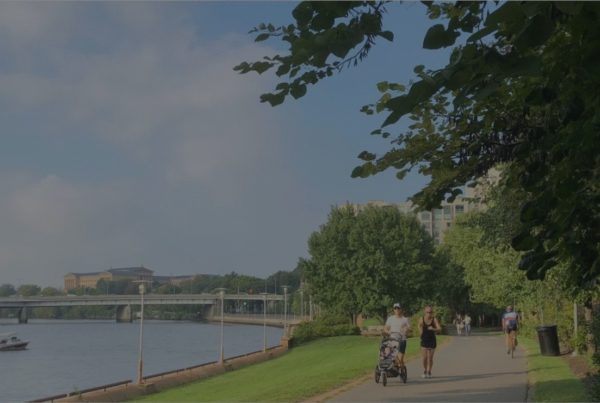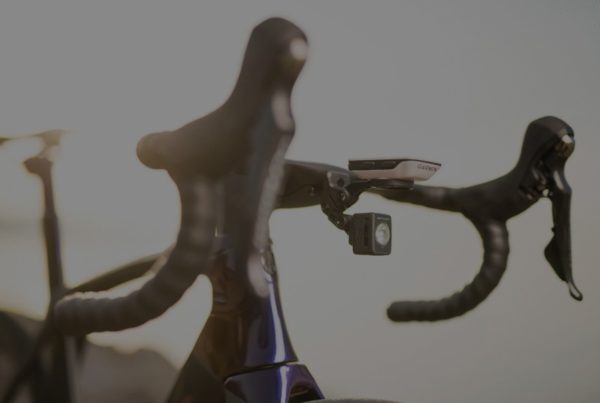When we excuse careless driving by blaming the victims of careless driving, we ensure that other drivers will continue to drive carelessly.
Phil Gaimon was a self-described “fat kid,” with no real ambition in life beyond sitting on the couch playing video games with his friends. But he needed a way to get to his friend’s houses to play video games, so he bought a bike, a used Trek hybrid, so he could get around.
And without realizing it at first, his bike gradually transformed him from an overweight, angry, angsty teen, to a fit, happy, confident, social young man who began to explore the larger world beyond Atlanta’s suburbs. From a teenage kid riding to his friend’s houses, and to the larger world beyond, Phil went on to try out collegiate racing, and discovered something about himself—he had a talent for racing. Eventually, he took that talent all the way to the pro peloton.
In some ways, Phil’s story is like my own story. I started out by buying a new touring bike when I was 17, riding the backroads of Wisconsin farm country, exploring the forests and lakes beyond my small Wisconsin town. Maybe Phil’s story is like your story too. We all began our love for this sport somewhere, perhaps in seemingly insignificant ways, probably never realizing where it would take us. I know I did. And you probably did too.
Last month, Phil took the bike world by storm again, when he released a video that quickly went viral: “Please share this when I’m killed by someone driving a car.”
In his video, Phil explains that he had been motivated to release the video after an alarming spike in cyclist traffic deaths in New York City and beyond—and by how these deaths were subsequently flipped by the police and media from “careless driver kills cyclist” to “careless cyclist killed.”
But then he revealed that he had actually made the video months before, after a speeding driver passing another car on a blind hairpin corner nearly killed him. He revealed something else, too: “I know how I’m going to die. It’s going to be something like this.” He closed with a request. “When that happens, please share this video, and make sure that the headline is correct. Make sure it says: ‘Some asshole was texting or going too fast and ran over Phil in his fucking car.’”
Nailed it.
As Phil lays out in detail with dozens of actual headlines, careless drivers kill and face no charges for what are framed as “accidents.” Repeatedly, police blame the victims of careless driving. Repeatedly, media blames the victims of careless driving. The truth about cycling fatalities that’s repeatedly glossed over when the police and the media flip the script on traffic safety is that cyclists aren’t killed because they weren’t wearing a helmet, or because “the cyclist came out of nowhere,” or because “the cyclist darted in front of me,” or because “the cyclist was wearing black and therefore invisible.” Those news stories are propaganda excusing careless driving by shifting the blame from the careless driver to the manufactured flipped-script “carelessness” of the cyclist.
These blame-shifting excuses have become so commonplace they seem “normal” to law enforcement, the media, our courts, and the careless drivers who make them. Attorney Peter Wilborn’s own career representing cyclists began tragicallywhen his brother was killed by a red-light runner. When his family talked to an attorney who had the reputation of being the best lawyer in town, the attorney asked if Peter’s brother had a DUI. Peter explains: “With my grieving family around the conference table, we looked at him with horror. He clarified: ‘Well, why else was he on a bike?’”
From that shocking moment of legal system cluelessness, Peter was inspired to devote his legal career to defending cyclist’s rights and representing them in court, and even founded a network of similar-minded attorneys to represent cyclists nationwide. Today, Peter notes that, “We’ve handled at least one fatality for every victim-blaming trope Phil Gaimon mentions. Every one of them proven wrong. Victim-blaming is so endemic that cyclists are increasingly and incorrectly blaming each other for crashes with cars. Phil nails it here. Right time, right message. Let’s all listen.”
Peter is right, and Phil is right. We need to listen to what’s being said when careless drivers cause collisions, and challenge these excuses every time. Victim-blaming isn’t just a matter of treating an individual traffic injury or death unjustly. When we excuse careless driving by blaming the victims of careless driving, we ensure that other drivers will continue to drive carelessly. And like a ripple in a pond, each traffic death spreads beyond the immediate scene, affecting untold numbers of people who think to themselves, nope, too dangerous for me.”
What would Phil Gaimon’s life have been like if he had never bought that first Trek hybrid? What would the sport we all love have been like without the entertaining charisma of the “Cookie Monster”? What would your life have been like if riding in traffic had been so perilous when you began that it kept you off your bike? What would my life have been like? For me, I know my life would have been very different. Yours would probably have been very different, too.
What about the future “Cookie Monsters” out there now, who might be thinking about getting a bike? Or the young kids like me? Or like you? What will their future, and the future of our sport be, if we allow the outcomes of bad driving to continue as they are? Will they decide to ride? Or will they decide to do something they perceive as less dangerous, like sitting on the couch playing video games?
That’s what our sport is up against every time we excuse careless driving by blaming the victims of careless drivers.
Research and drafting provided by Rick Bernardi, J.D.
This article, Blame-Shifting Excuses Harm All Cyclists, was originally published on VeloNews on August 21, 2019.
Now read the fine print:
Bob Mionske is a former competitive cyclist who represented the U.S. at the 1988 Olympic Games (where he finished fourth in the road race), the 1992 Olympics, as well as winning the 1990 national championship road race.
After retiring from racing in 1993, he coached the Saturn Professional Cycling team for one year before heading off to law school. Mionske’s practice is now split between personal-injury work, representing professional athletes as an agent and other legal issues facing endurance athletes (traffic violations, contract, criminal charges, intellectual property, etc.).
Mionske is also the author of “Bicycling and the Law,” designed to be the primary resource for cyclists to consult when faced with a legal question. It provides readers with the knowledge to avoid many legal problems in the first place, and informs them of their rights, their responsibilities, and what steps they can take if they do encounter a legal problem. If you have a cycling-related legal question please send it to Bob, and he will answer as many of these questions privately as he can. He will also select a few questions to answer in this column. General bicycle-accident advice can be found at bicyclelaw.com.
Important notice:
The information provided in the “Legally Speaking” column is not legal advice. The information provided on this public website is provided solely for the general interest of the visitors to this website. The information contained in the column applies to general principles of American jurisprudence and may not reflect current legal developments or statutory changes in the various jurisdictions and therefore should not be relied upon or interpreted as legal advice. Understand that reading the information contained in this column does not mean you have established an attorney-client relationship with attorney Bob Mionske. Readers of this column should not act upon any information contained in the website without first seeking the advice of legal counsel.
© Bob Mionske 2019. All Rights Reserved.




